Complete Solutions to Multiple Correct of chapter CALORIMETRY of Class 11 book with complete answers and questions
| Class 11 | PHYSICS |
| Chapter | CALORIMETRY |
| CENGAGE PHYSICS | Multiple Correct |
| Number Of Questions | 25 |
| Academic Year | 2023-24 |
Due to thermal expansion with rise in temperature:
View SolutionDuring heat exchange, temperature of a solid mass does not change. In this process, heat
View SolutionA metallic circular disc having a circular hole at its centre rotates about an axis passing through its centre and perpendicular to its plane. When the disc is heated:
View SolutionA polished metallic piece and a black painted wooden piece are kept in open in bright sun for a long time.
View SolutionA heated body emits radiation which has maximum intensity at frequency `v_m` If the temperature of the body is doubled:
View SolutionDuring the melting of a slab of ice at 273K at atmospheric pressure,
View Solution
The temperature drop through a two layer furnace wall is `900^@C`. Each layer is of equal area of cross section. Which of the following actions will result in lowering the temperature `theta` of the interface?
View SolutionThe ends of a metal rod are kept at temperatures `theta_1` and `theta_2` with `theta_2gttheta_1`. The rate of flow of heat along the rod is directly proportional to
View SolutionChoose the correct statements from the following:
View SolutionChoose the correct statements from the following:
View SolutionWhen the temperature of a copper coin is raised by `80^@C`, its diameter increases by `0.2%`.
View SolutionA vessel is partly filled with liquid. When the vessel is cooled to a lower temperature, the space in the vessel unoccupied by the liquid remains constant. Then the volume of the liquid `(V_L)` volume of the vessel `(V_V)` the coefficient of cubical expansion of the material of the vessel `(gamma_v)` and of the solid `(gamma_L)` are related as
View SolutionTwo identical objects A and B are at temperatures `T_A` and `T_B`. Respectively. Both objects are placed in a room with perfectly absorbing walls maintained at a temperature `T(T_AgtTgtT_B)`. The objects A and B attain the temperature T eventually. Select the correct statements from the following:
View Solution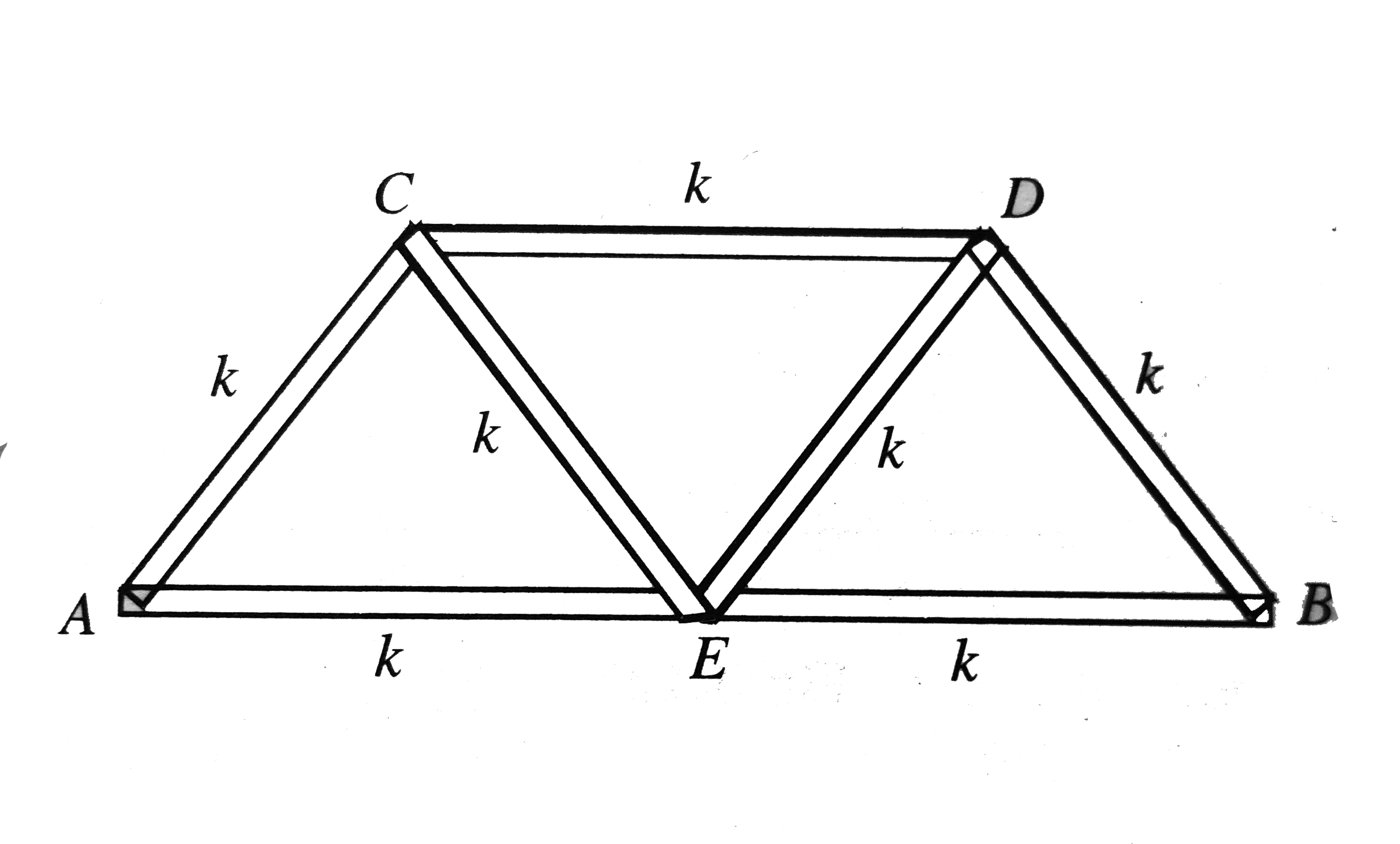
Seven identical rods of material of thermal conductivity k are connected as shown in Fig. All the rods are of identical length l and cross sectional area A If the one end B is kept at `100^@C` and the other end is kept at `0^@C` what would be the temperatures of the junctions C, D and `E(theta_C`,`theta)D` and `theta_E`) in the steady state?
View SolutionA clock is calibrated at a temperature of `20^@C` Assume that the penduum is a thin brass rod of negligible mass with a heavy bob attached to the end `(alpha_("brass")=19xx10^(-6)//K)`
View Solution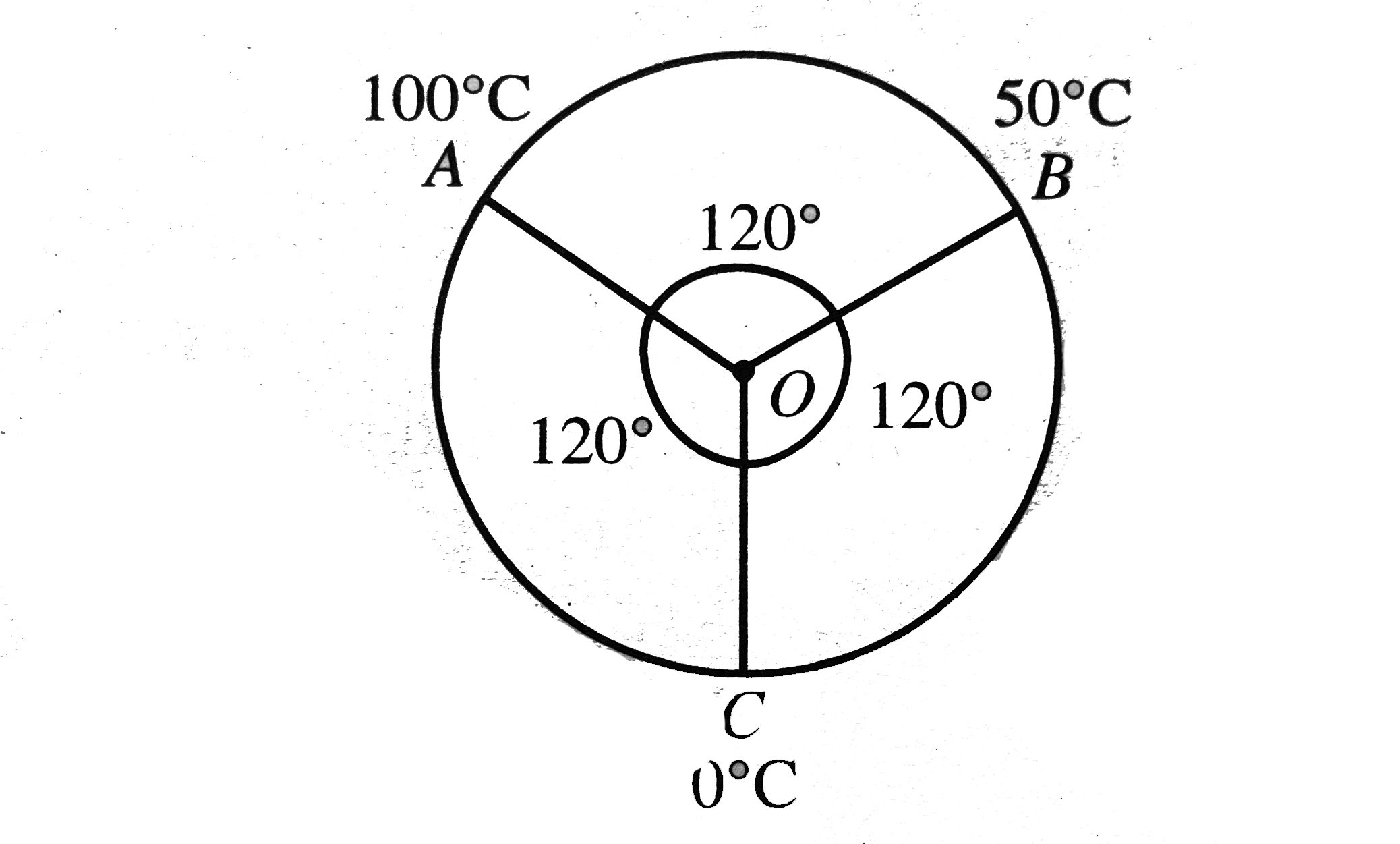
A circular ring (centre O) of radius a, and of uniform cross section is made up of three different metallic rods AB, BC and CA (joined together at the points A, B and C in pairs) of thermal conductivityies `alpha_1`,`alpha_2` and `alpha_3` respectively (see diagram). The junction A, B and C are maintained at the temperatures `100^@C`,`50^@C` and `0^@C`, respectively. All the rods are of equal lengths and cross sections. Under steady state conditions, assume that no heat is lost from the sides of the rods. Let `Q_1`,`Q_2` and `Q_3` be the rates of transmission of heat along the three rods AB, BC and CA. Then
View Solution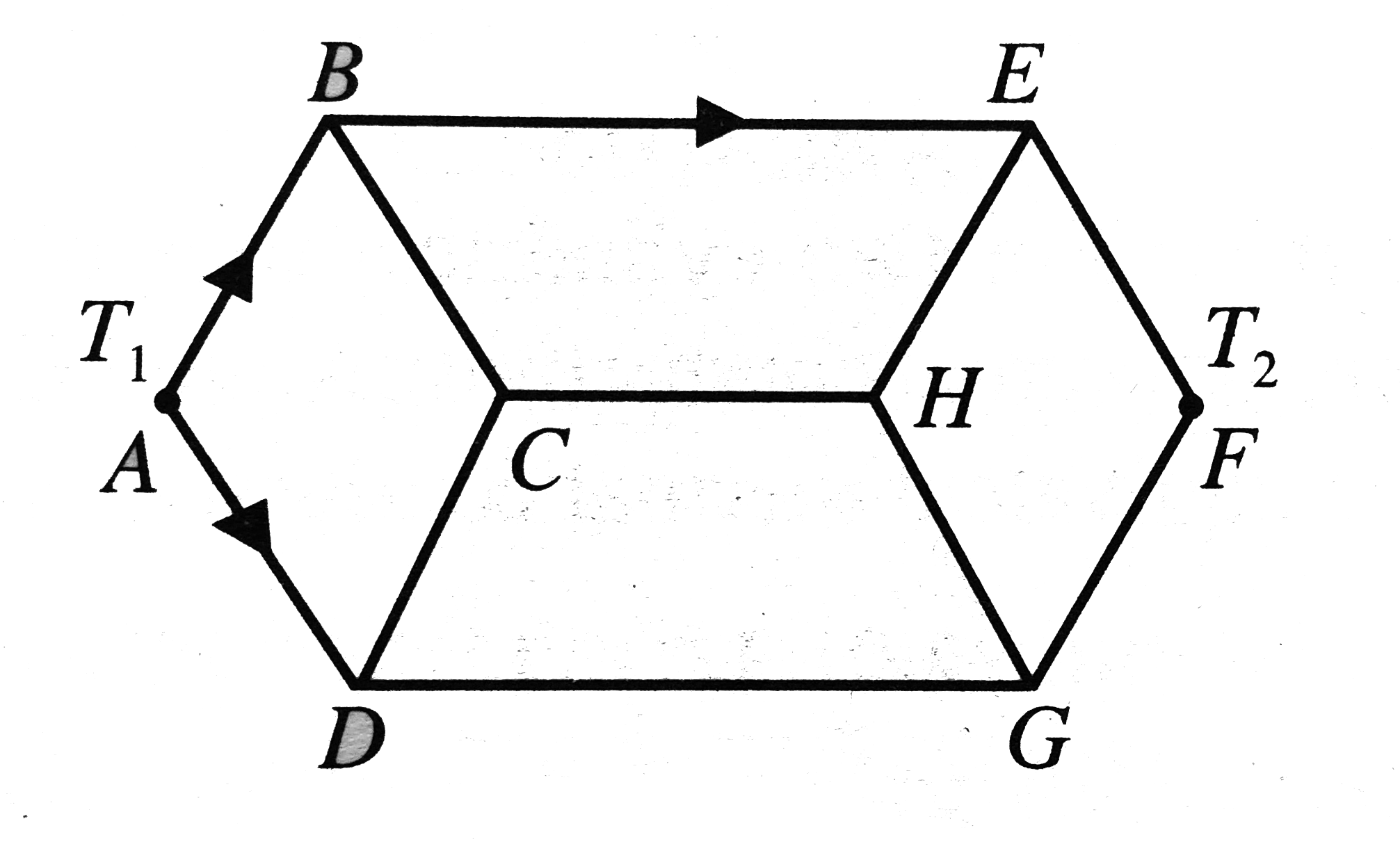
Eleven identical rods are arranged as shown in Fig. Each rod has length `l`, cross sectional area A and thermal conductivity of material L. Ends A and F are maintained at temperatures `T_1` and `T_2(ltT_1)`, respectively. If lateral surface of each rod is thermally insulated, the rate of heat transfer `((dQ)/(dt))` in each rod is
View SolutionA solid sphere and a hollow sphere of the same material and of equal radii are heated to the same temperature.
View Solution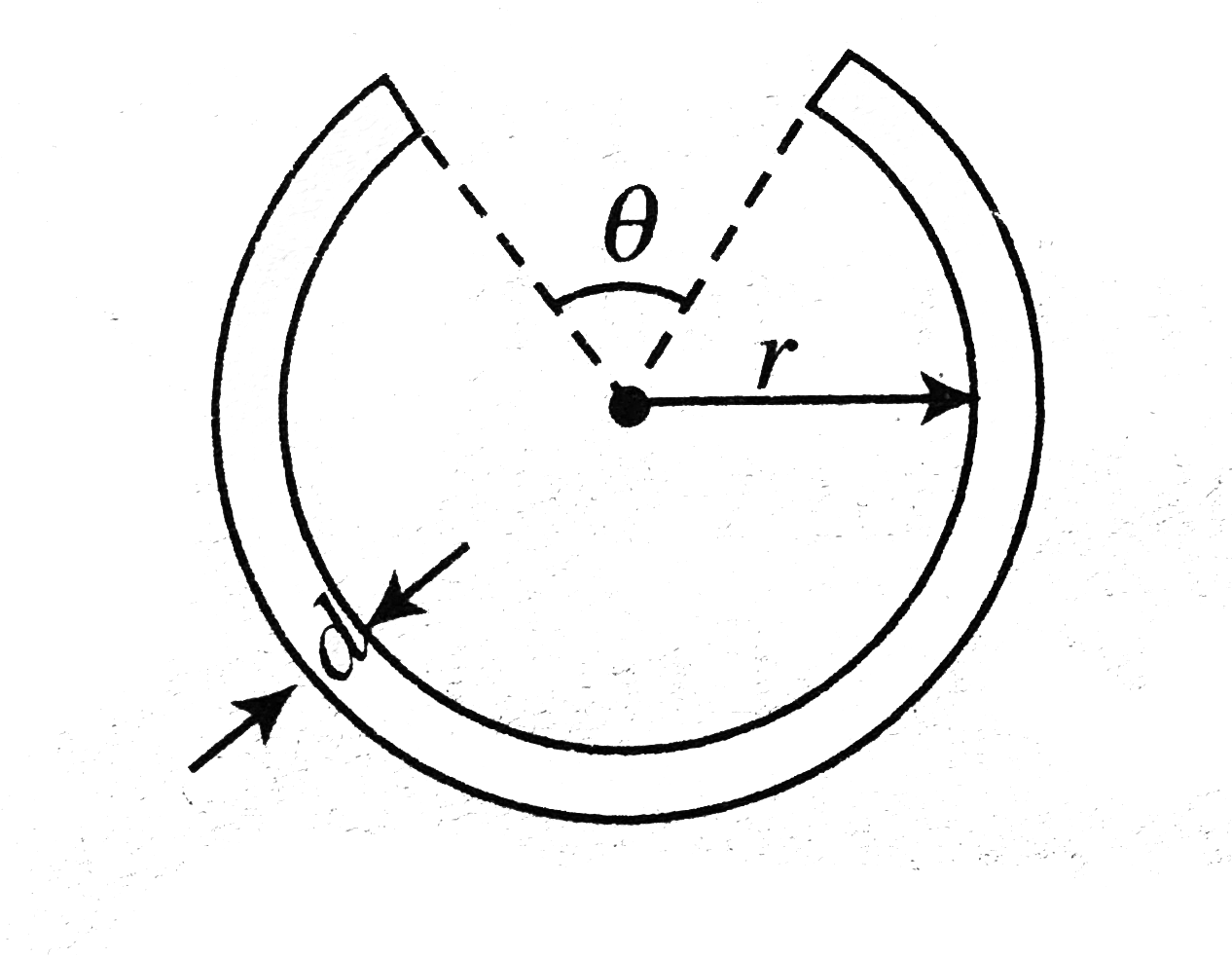
A thin cylindrical metal rod is bent into a ring with a small gap as shown in figure. On heating the system
View Solution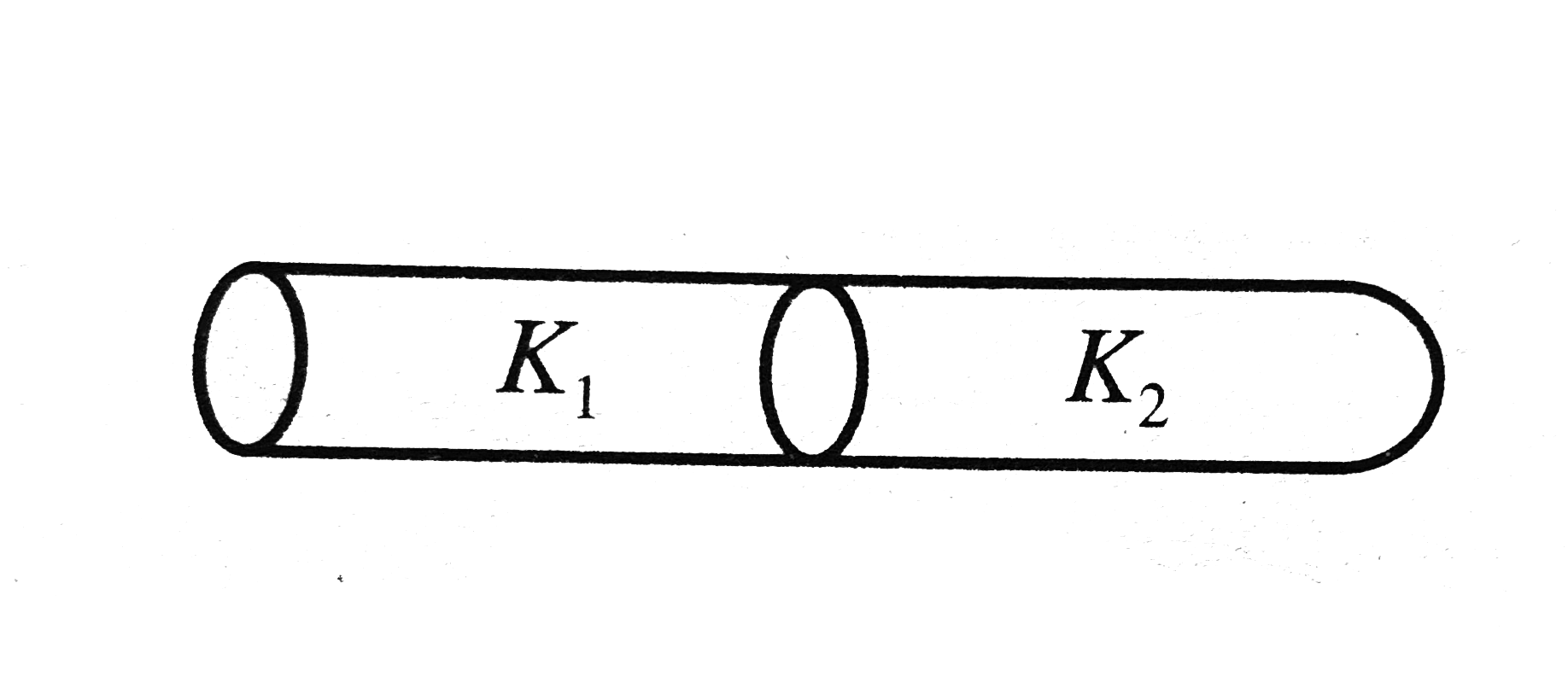 Statement I: Two solid cylindrical rods of identical size and different thermal conductivity `K_1` and `K_2` are connected in series. Then the equivalent thermal conductivity of two rods system is less than that value of thermal conductivity of either rod.
Statement I: Two solid cylindrical rods of identical size and different thermal conductivity `K_1` and `K_2` are connected in series. Then the equivalent thermal conductivity of two rods system is less than that value of thermal conductivity of either rod.
Statement II: For two cylindrical rods of identical size and different thermal conductivity `K_1` and `K_2` connected in series, the equivalent thermal conductivity K is given by `(2)/(K)=(1)/(K_1)+(1)/(K_2)`
View SolutionStatement I: As the temperature of the black body increases, the wavelength at which the spectral intensity `(E_lamda)` is maximum decreases.
Statement II: The wavelength at which the spectral intensity will be maximum for a black body is proportional to the fourth power of its absolute temperature.
View SolutionStatement I: The thermal resistance of a multiple later is equal to the sum of the thermal resistance of the individual laminas.
Statement II: Heat transferred is directly proportional to the temperature gradient in each layer.
View SolutionIn natural convection, the fluid motion is caused due to density difference produced by temperature gradient.
Statement II: In forced convection, the fluid is forced to flow along the solid surface by means of fans or pumps.
View SolutionStatement I: The bulb of one thermometer is spherical while that of the other is cylindrical . Both have equal amounts of mercury. The response of the cylindrical bulb thermometer will be quicker.
Statement II: Heat conduction in a body is directly proportional to cross-sectional area.
View SolutionStatement I: The expanded length l of a rod of original length `l_0` is not correctly given by (assuming `alpha` to be constant with T) `l=l_0(1+alphaDeltaT)` if `alphaDeltaT` is large.
Statement II: It is given by `l=l_0e^(alphaDeltaT)`, which cannot be treated as being approximately equal to `l=l_0(1+alphaDeltaT)` for large value a `DeltaT`.
View Solution
Multiple Correct questions and complete solutions for chapter CALORIMETRY of CENGAGE PHYSICS (HINGLISH) of Class 11